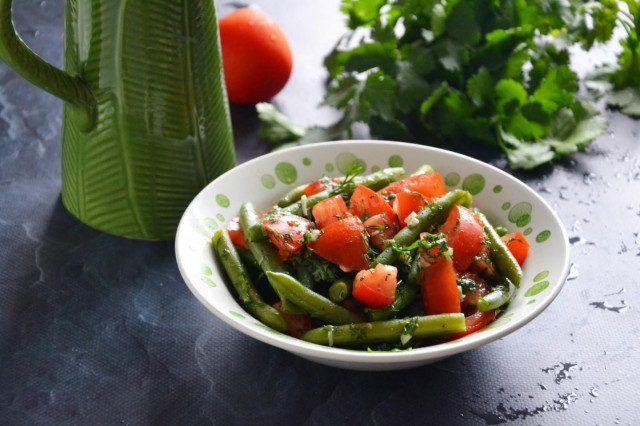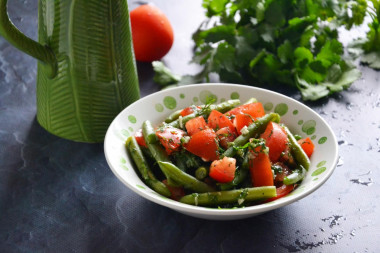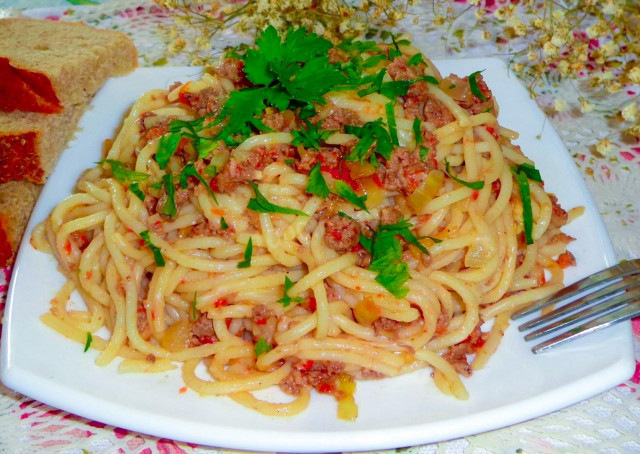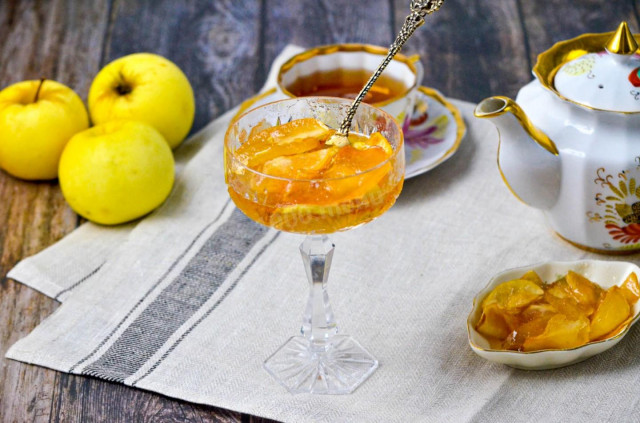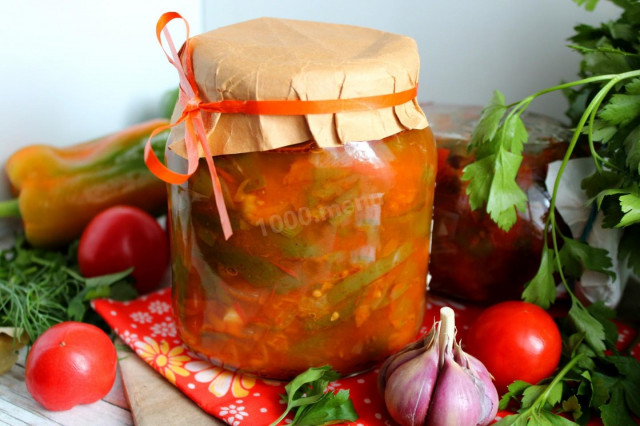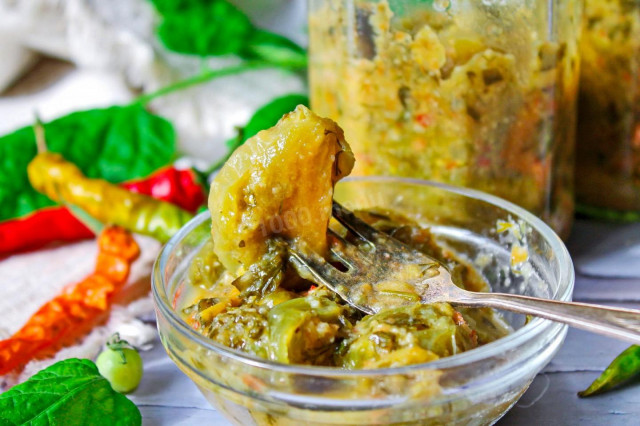Composition / ingredients
Step-by-step cooking
Step 1:
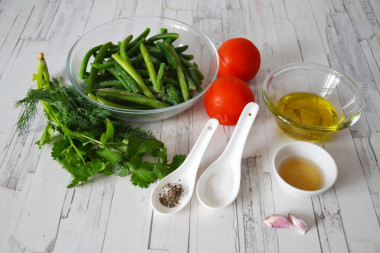
Prepare the ingredients. To prepare a salad with string beans and tomatoes, we will need: frozen or fresh green beans; tomatoes; a small bunch of dill and cilantro; garlic. For refueling, we will need: olive oil; white wine vinegar; sugar; ground black pepper and salt.
Step 2:
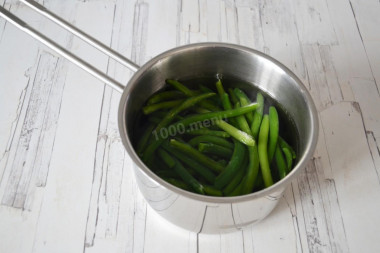
Put the string beans in boiling salted water and boil for 3 minutes. If the beans are frozen, pre-defrost.
Step 3:
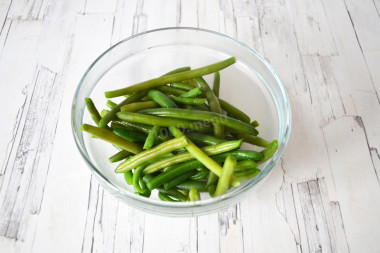
Then flip the beans into a colander and dry.
Step 4:
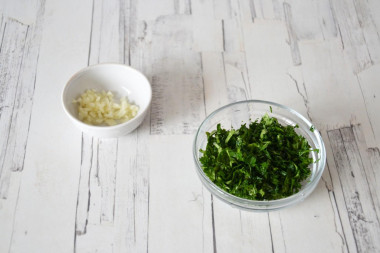
Peel and finely chop the garlic. Wash the dill and cilantro, dry and finely chop.
Step 5:
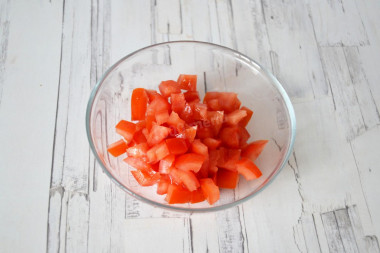
Wash tomatoes, dry and cut into small cubes.
Step 6:
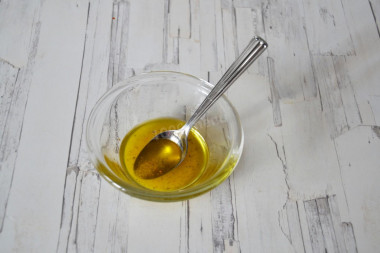
Refueling. Combine olive oil with white wine vinegar, sugar, ground black pepper and salt. Stir until the sugar and salt are completely dissolved.
Step 7:
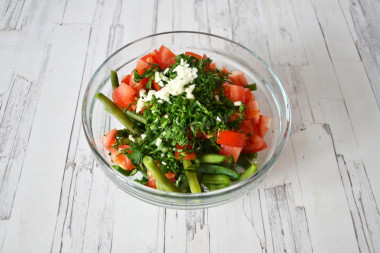
In a salad bowl, mix string beans, tomatoes, chopped herbs and garlic. Pour the dressing over the salad and mix.
Step 8:
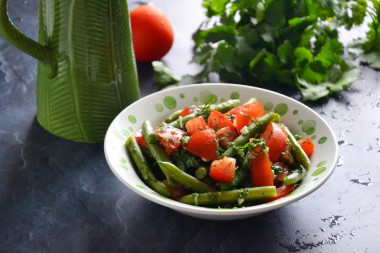
Serve the salad to the table. Enjoy your meal!
Green beans, string beans or asparagus? We understand the concepts.
The nutritional properties of young beans have been known to mankind for a very long time. Even South American Indians used it for food. But the Europeans initially used this culture only as an ornamental plant, which is distinguished by a very beautiful flowering.
It was only in the XVII century that they were able to evaluate the taste qualities of the beans that the ripened pod contains. A little later, the Italians tasted the unripe fruits, and they are still used almost everywhere in the national Italian cuisine.
It is not customary to cook young fruits for a long time, so that the most useful properties and nutritional elements are not lost. Some modifications of this useful culture are called asparagus. They are semi-sugary, do not contain coarse fibrous threads.
The asparagus variety is recognized as a subspecies of pod culture. Asparagus is endowed with juicy flesh, soft pod leaves that do not have rigid threads and strong partitions. Solid doors protect the vegetable from mechanical damage and invasions of harmful insects. The difference between selectively grown asparagus varieties is rather fragile pods. For this indicator, they are appreciated by gourmets all over the world.
The edible part of the culture is whole young pods that have been growing for 8-10 days. They are called shoulder blades in another way. The taste of the pods is soft, and they differ from string beans in that they lack hard fibers.
The caloric content of the products possible in the composition of the dish
- Tomatoes - 23 kcal/100g
- Garlic - 143 kcal/100g
- Ground black pepper - 255 kcal/100g
- Dill greens - 38 kcal/100g
- Granulated sugar - 398 kcal/100g
- Sugar - 398 kcal/100g
- Salt - 0 kcal/100g
- Olive oil - 913 kcal/100g
- Coriander greens - 25 kcal/100g
- White wine vinegar - 14 kcal/100g
- String beans - 24 kcal/100g

